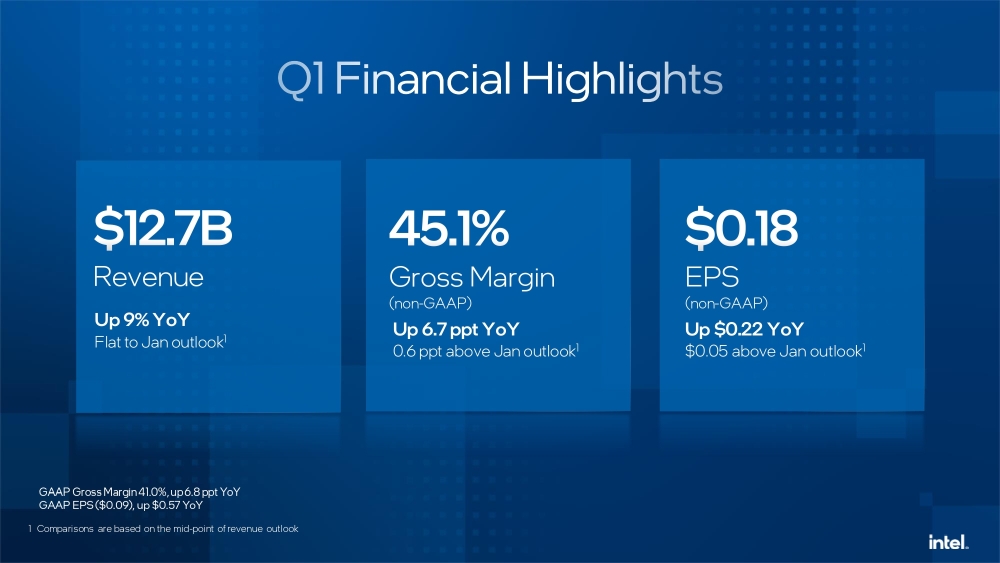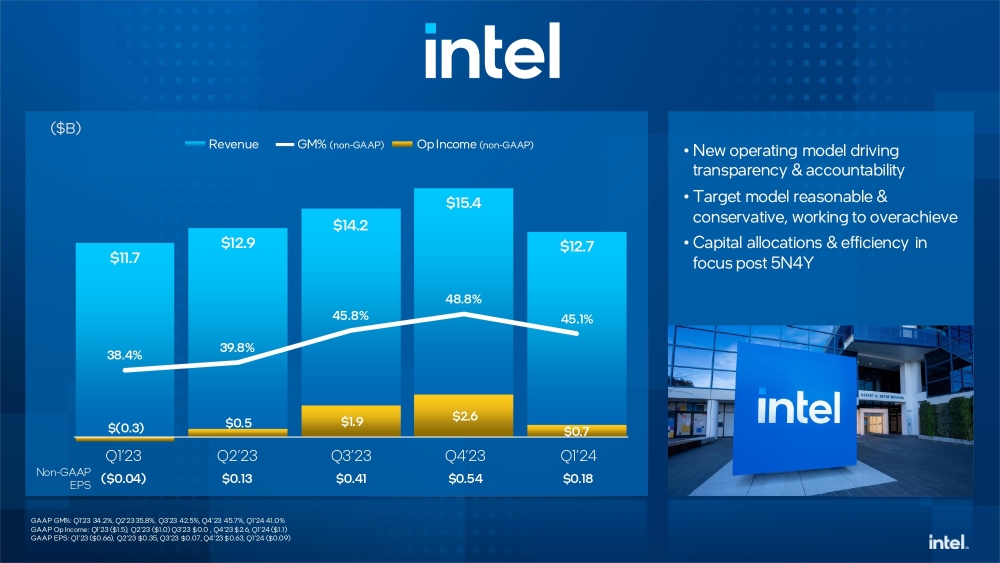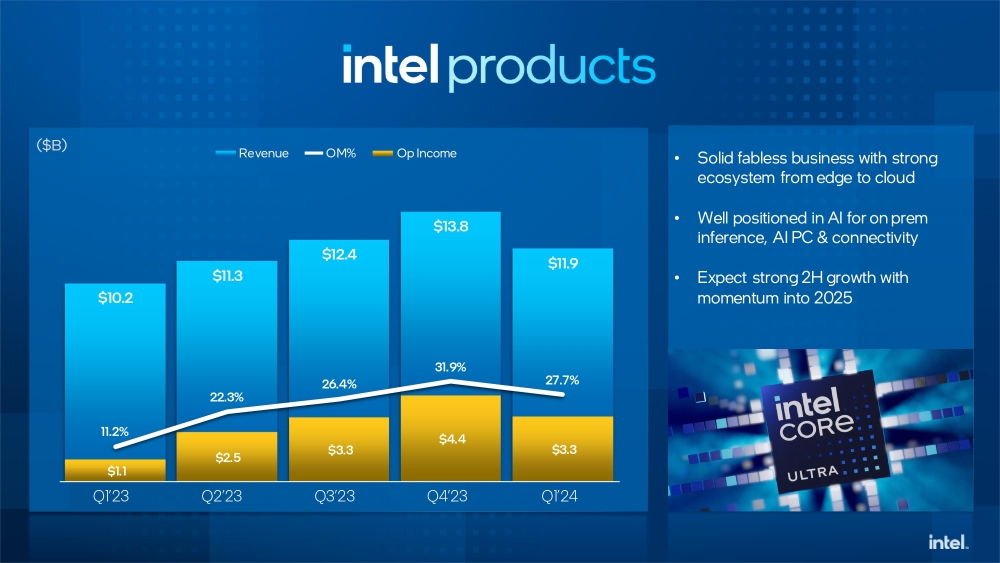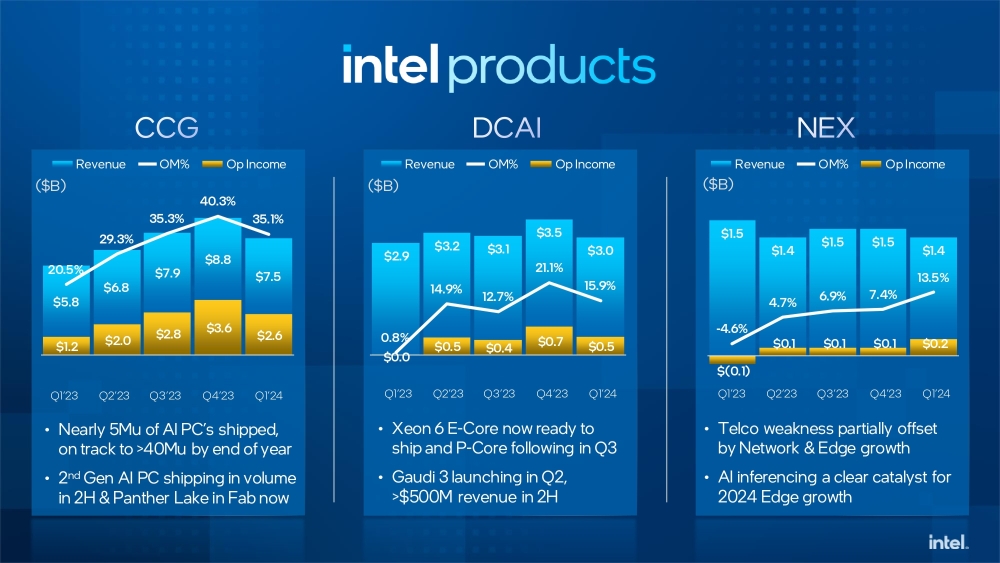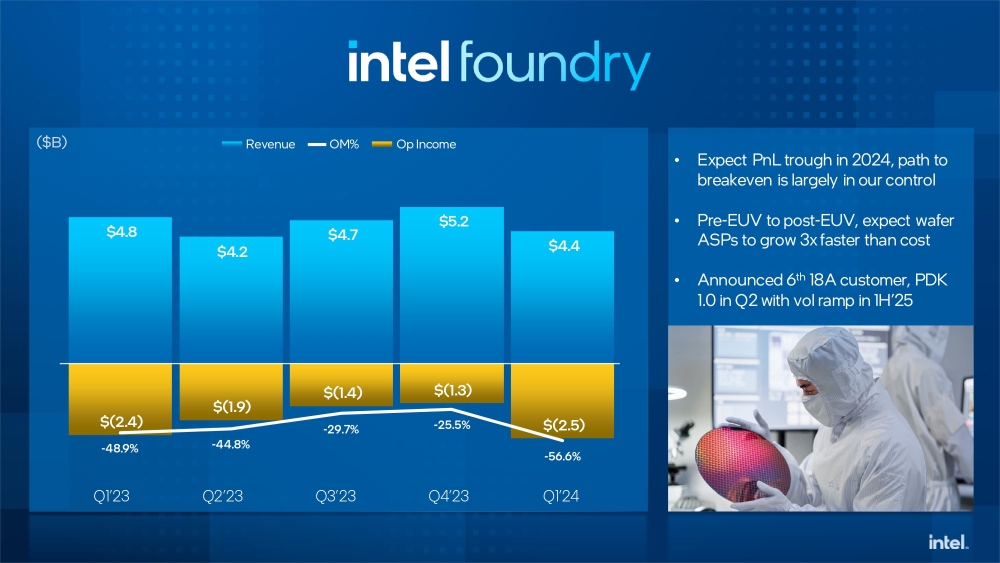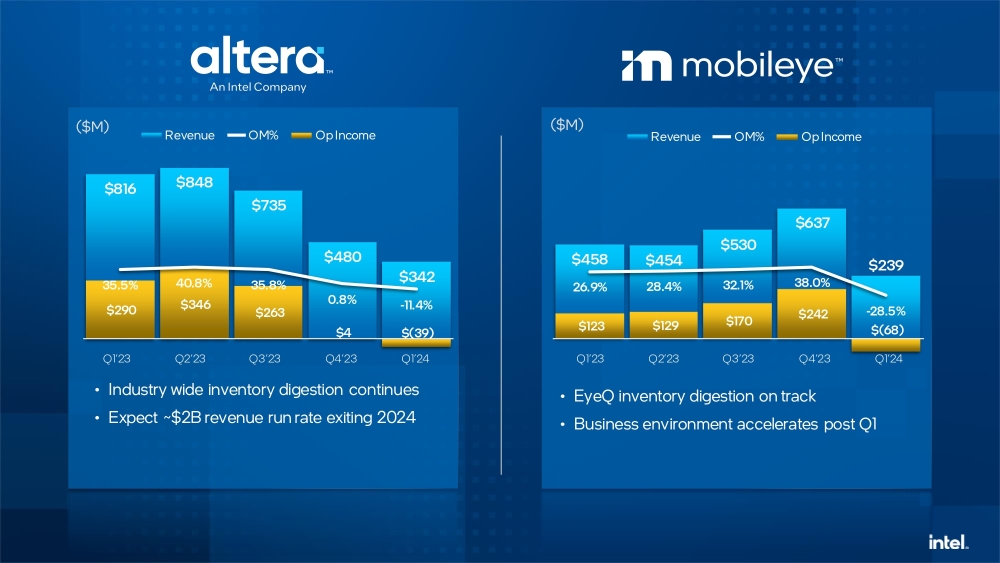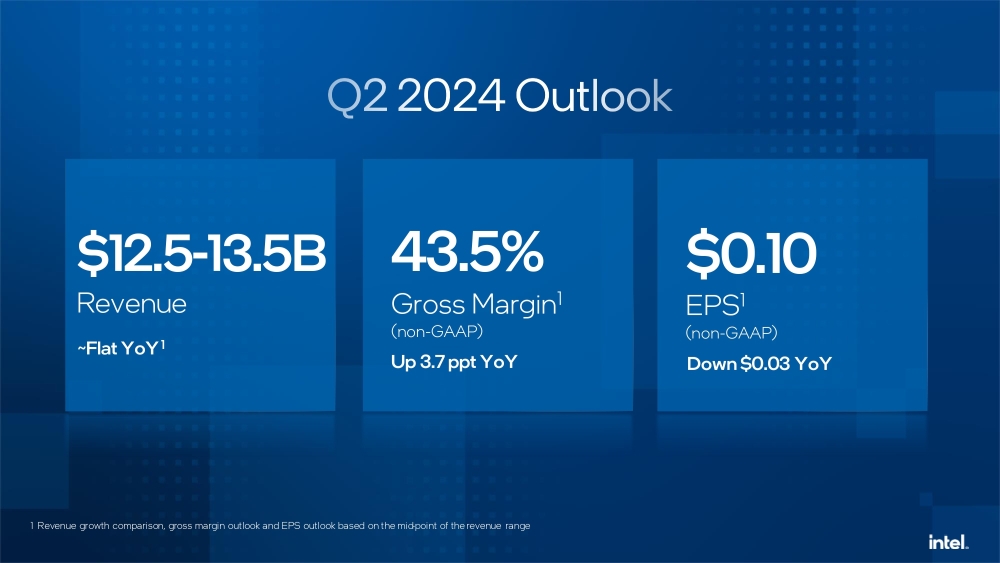The company predicted Q2 sales of $13 billion (€13.91 billion), which was below the analyst consensus of $13.6 billion (€14.54 billion), which
Intel shares had fallen even more sharply three months before it lowered its second-quarter expectations.
For the first quarter, the company reported a loss of $381 million (€407.67 million) or $0.09 (€0.0963) per share on sales of $12.7 billion (€13.58 billion)
This revenue exceeded its forecast of $12.5 billion and was nearly in line with Wall Street’s projection of $12.71 billion. Adjusted earnings per share of $0.18 (€0.1926) surpassed the expected $0.13.
Intel’s CEO Pat (kicking)Gelsinger said Chipzilla was making steady progress in achieving its priorities and delivered a solid quarter.
CFO Dave Zinsner added, “First Quarter revenue was in line with our expectations, and we delivered (adjusted) EPS above our guidance, driven by better-than-expected gross margins and strong expense discipline.”
With the 25 April report, Intel disclosed quarterly results for Intel Foundry for the first time. This chipmaking segment, which Gelsinger expects to grow significantly, manufactures chips for other companies and Intel’s products. Earlier in the month, Intel had alarmed investors by announcing that Intel Foundry incurred a $7 billion (€7.49 billion) operating loss in 2023 and was not projected to reach break-even until 2027.
Intel Foundry reported Q1 2024 sales of $4.4 billion (€4.71 billion), a 10 per cent decrease from the previous quarter. It also reported an operating loss of $2.5 billion (€2.675 billion).
In March, Intel received $8.5 billion (€9.09 billion) from the Biden Administration’s CHIP Act, a federal initiative to revitalise domestic chip manufacturing. This funding represents more than a fifth of the $39 billion allocated for semiconductor manufacturers.
